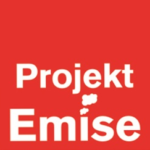What is light pollution?
Light pollution is a phenomenon that has become quite common in most countries. Yet many people still do not know about it, thus they do not even attempt to solve it.
Light pollution is an excess of artificially created light in places where it is not necessary or even harmful.
Prime examples of inappropriate lighting are rarely frequented areas, illuminated or over illuminated trees and monuments or unwanted light of streetlamps shining into the windows of nearby houses. Experts confirmed that bad lighting causes insomnia, which result in health problems, or even car accidents.
Unfortunately, this is no longer a local problem. On the contrary, it has become a world wide problem affecting most inhabited areas.
Light pollution is not only an outdoor problem, but is also found indoors and affects especially the younger generations. Many people are not aware of the harmful side effects of electronic devices. They emit blue light that reduces our ability to properly rest again leading to a multitude of health problems. For this reason we encourage the reduction of light pollution - outdoors and in the buildings as well.
How to reduce light pollution?
- only illuminate places and objects only if absolutely necessary
- shine only in the lower half-space
- choose light sources with reasonable intensity
- use a suitable color temperature of the source (sources below 2700 K are best)
What we do?
- we consult the problem with experts
- we cooperate with representatives of the executive and the legislative branch
- we collect information about the said problem
- we map public lighting in Opava
- we measure and record the parameters of mobile phones displays
- we educate primary schools in the field of physics, chemistry and legislation
- we educate and inform public about this problem
How do we measure light pollution?
First, we map out the individual areas of the city. Next we record which lamps are located in the given zone.
We measure the intensity and the colour spectrum of the light source of the lamp while documenting and photographing the entire trip.
We record the measurement results and finally, we add the information to our map and to our sheets.
Types of lamps:
- Sodium-vapor lamps with a flat bottom cover
- Sodium-vapor lamps with a rounded bottom cover
- Rounded sodium-vapor lamps
- Cool LED lighting
- Warm LED lighting
- Fluorescent lamps
- Gas-discharge lamps
More information
We measure the light intensity of the source using a luxmeter and record two results - one from ground at the base of the lamp (maximum intensity) and between the lamps (minimum intensity). The colour temperature is measured with a spectrometer. Apart from determining the value in kelvins the spectrometer creates a graph of the individual colors for every lamp. Each graph is saved for possible review.
You can help us by taking pictures of poorly built lamps or, on the contrary, examples of good lighting. You can send us these photos to our email: emise@sgopava.cz.
In addition to lamps, other light sources such as billboards are measured.
We document our measuring trips on our Twitter and Instagram feeds along with the articles and photos on our website.
